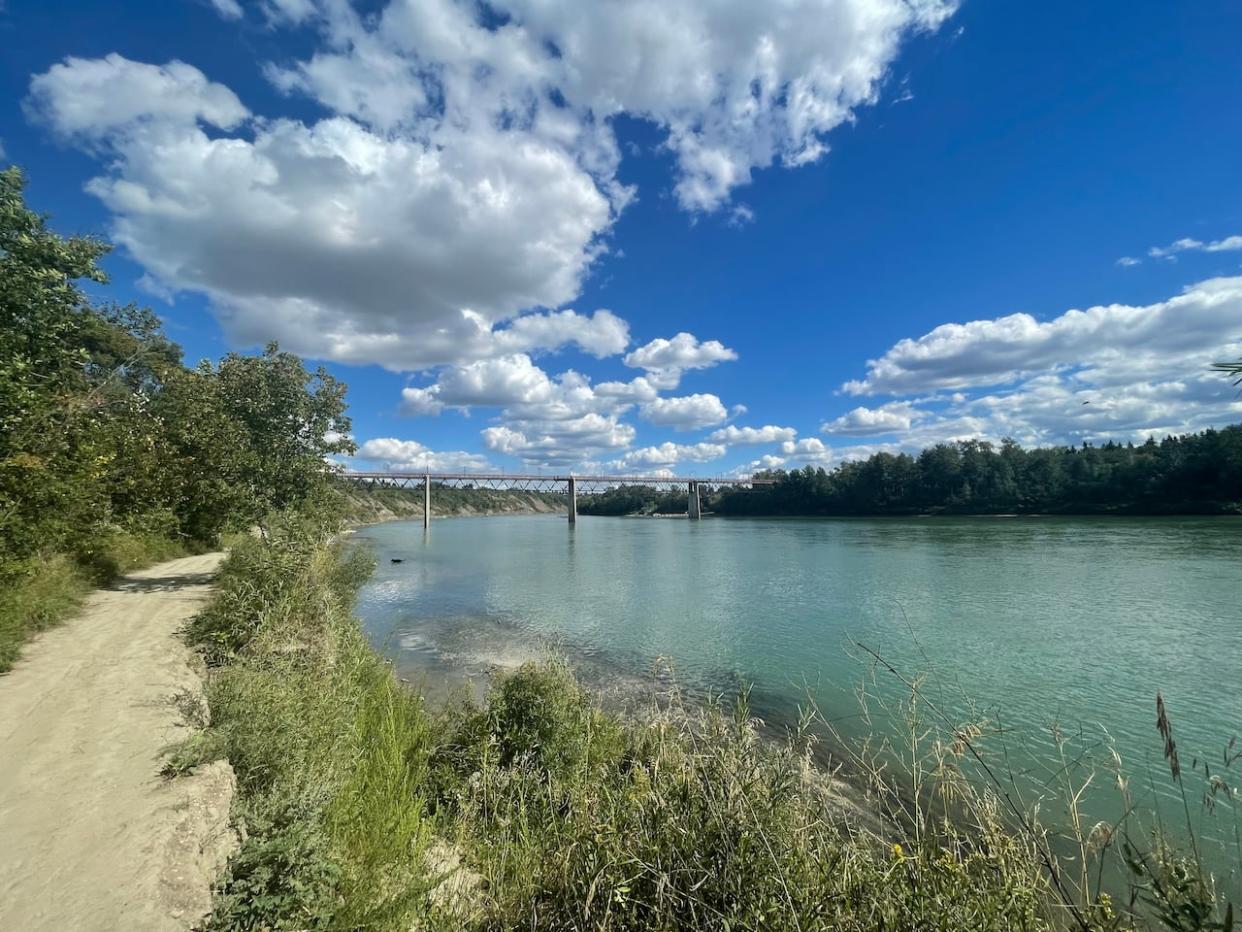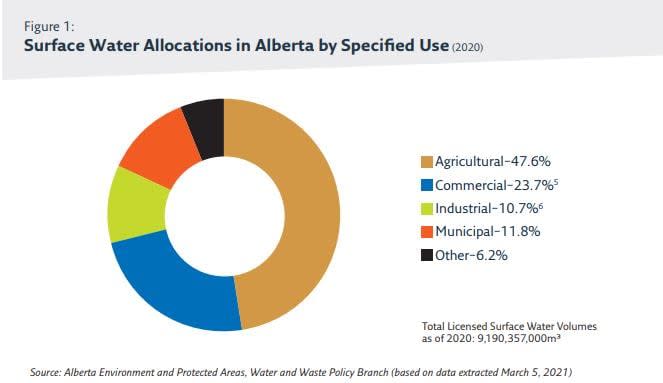Alberta's water conservation and management system needs major fixing, auditor finds

Alberta needs to improve the way it manages water, monitors how and how much it's being used and ensure users are following the rules, according to the auditor general in a report released Wednesday.
The auditor's team reviewed the system under the Ministry of Environment and Protected Areas from Jan. 2019 to Nov. 2022.
They found three main areas the province is lacking: in managing surface water, issuing licences and tracking their use, and making the data public.
"The department lacks effective processes to manage surface water allocation and use in the province," Doug Wylie, Alberta's auditor general, said in an interview with CBC News following the release of the report.
"Alberta could face more severe and frequent droughts in the future," Wylie said.
Managing the system better could help mitigate droughts and water shortages, he added.
The findings show the province does not have water conservation objectives in most of the water basins in Alberta.
The department lacks robust processes to monitor water pressures and assess risks, the report says.
The potential consequences of inaction are serious.
If things stay the same, the risk of water shortages increases, leading to higher costs, a shortage of goods and an inability to meet future water needs for people, businesses, and the economy, the report says.
Critical part of picture
Scott Millar, executive director for the North Saskatchewan Watershed Alliance, said he thinks the report's findings highlight areas that have needed attention for a long time.
"Having a water conservation objective that is protective of the environment is a pretty critical part of the whole picture," he told CBC News Wednesday.
"It's pretty hard to manage a system, any kind of system, water or otherwise, without knowing what you're managing towards."
For example, setting limits and thresholds on water use, he said.
"In most places we don't have that," Millar said.
Among the seven major river basins only two — South Saskatchewan River Basin and Beaver River Basin — have fully functioning water conservation objectives.
Consequently, new licences in these areas may lack withdrawal restrictions or may have less stringent aquatic protection conditions compared to water conservation objectives, the report says.

The agriculture industry uses the most water of all industries in Alberta. (Ministry of Environment and Protected Areas)
There's no firm deadline or timeline to make changes but the Environment and Protected Areas ministry says it's acting to maximize Alberta's water supply.
In a statement sent Wednesday, Ryan Fournier, press secretary to Minister Rebecca Schulz, said the budget includes $23 million over three years to improve the province's water management system.
According to Fournier, nearly $19 million will go toward reviewing the regulatory system to identify new policy tools and opportunities, working with water users and partners to identify new ways to improve water conservation.
"Water conservation objectives are already in place where they are most effective, in areas with high water demand or where water shortages are more common," he said.
Contrary to the auditor's findings, in areas where water shortages are not expected, requirements within individual water licences help ensure water resources are used and reported on appropriately, Fournier said.
Sarah Elmeligi, the NDP environment critic, said she's concerned about the auditor's findings.
"We are experiencing a multi-year drought that spans all corners of the province, so it's shocking to learn that most major river basins don't even have water conservation objectives, Elmeligi said in a statement Wednesday.
Elmeligi said developing water conservation objectives for major river basins should be the first priority.
"It's a really great space to involve stakeholders and licensed users and the public in the conversation around water conservation," she said in an interview with CBC News.
The drought is affecting the whole province, not just southern Alberta, Elmeligi said.
"We truly are in this all together as Albertans."
Reporting system flawed
The north-flowing river basins contain most of the province's water resources but the majority of Alberta's population lives in the south.
The South Saskatchewan River Basin contains 13 per cent of Alberta's surface water but has 37 per cent of Alberta's population.
Eric Leonty, the assistant auditor general, also noted the system is mostly driven by complaints or self-reporting, which can be flawed.
The number of times non-compliance was reported was a lot lower than the instances found by the audit team.
"So it shows that that self-reporting mechanism is perhaps not as effective as needed when it comes to monitoring compliance," Leonty said.
That can include licensees reporting their water usage or identifying when they've exceeded their allocation, he noted.
"So we found examples where a licensee exceeded their allocation, but that wasn't picked up by the departmental process or wasn't self-reported. And so that is certainly an issue."

 Yahoo News
Yahoo News 
